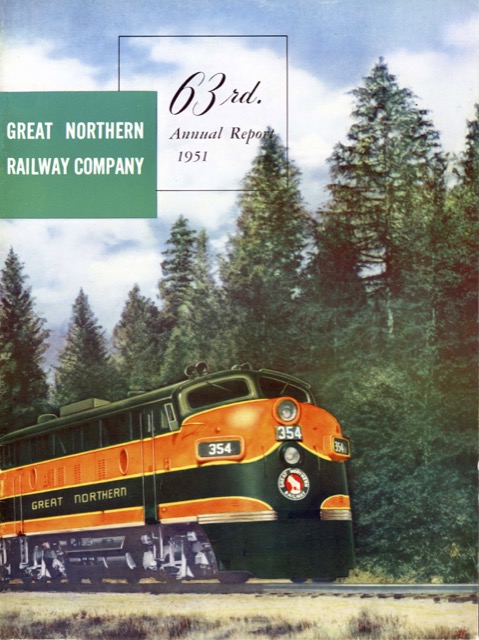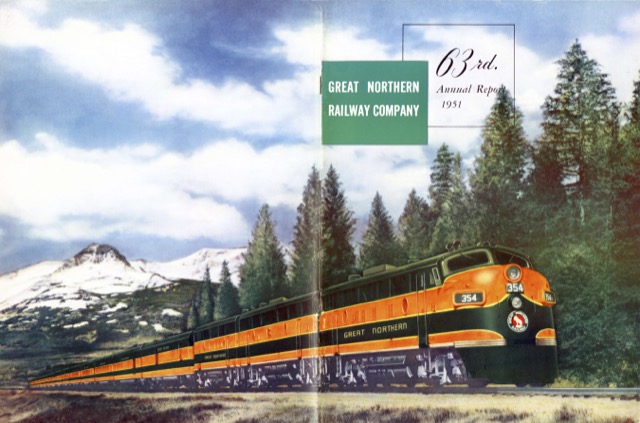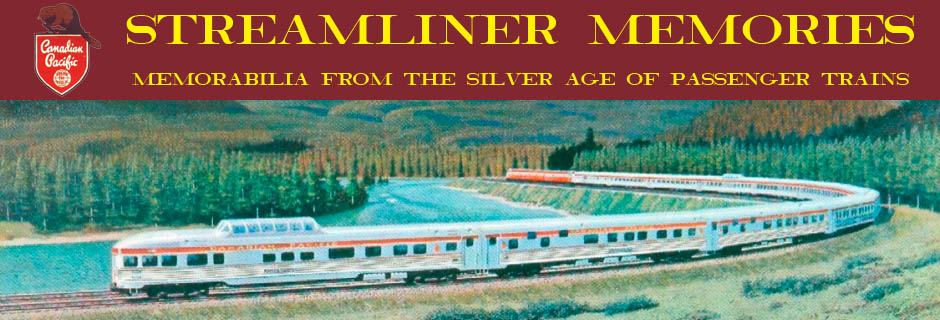Ralph Budd’s son, John, became president of the Great Northern in May, 1951, so this is the first annual report that signed by him rather than Frank Gavin, who stayed on as chairman of the board. The wrap-around cover shows a silver-trucked F3 pulling the Mid-Century Empire Builder; the full cover is shown below.
 Click image to download a 14.7-MB PDF of this 24-page report.
Click image to download a 14.7-MB PDF of this 24-page report.
The centerfold features photos of the new Empire Builder, which is also pictured on page 8 while the new Western Star is shown on page 13. Passenger trains had barely received a mention in the 1949 annual report; here there is a full page of analysis.
“There is no question but that the new Empire Builder equipment has secured for Great Northern a larger share of the railway passenger traffic in its territory,” says the report. GN’s share of passenger revenues grew from less than $19 for every $100 collected by other Northwest railroads before 1947 to more than $24 per $100 in 1951, which is particularly impressive considering the competition–NP, UP, and Milwaukee–all served a somewhat higher population base than GN.
 Click image to download a 1.2-MB PDF of this cover.
Click image to download a 1.2-MB PDF of this cover.
The railway was also encouraged by the fact that 1951 passenger miles and revenues were both higher than any year since 1947, as well as the years from 1921 to 1941. The railway’s optimism was shown by the fact that the 1951 Empire Builder was three cars longer than the 1947 edition. However, in 1951 passenger trains brought in only about 5 percent of the railway’s total revenues, whereas in 1920 it had been 20 percent, as freight revenues had grown much faster than passenger.
The annual report also has several photos of Diesels but was the first annual report to have no photos of steam. Although the railroad would continue to use steam locomotives until 1956, the only hint of steam in this report is a photo on the inside front cover of a machinist working on a wheel that is obviously too large to be anything but a driver from a steam locomotive.
